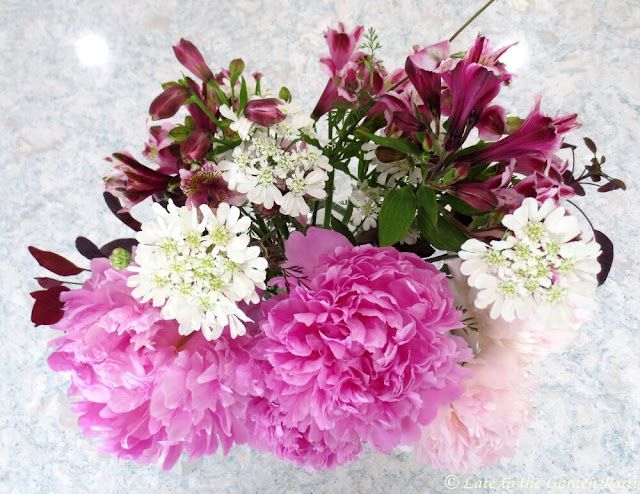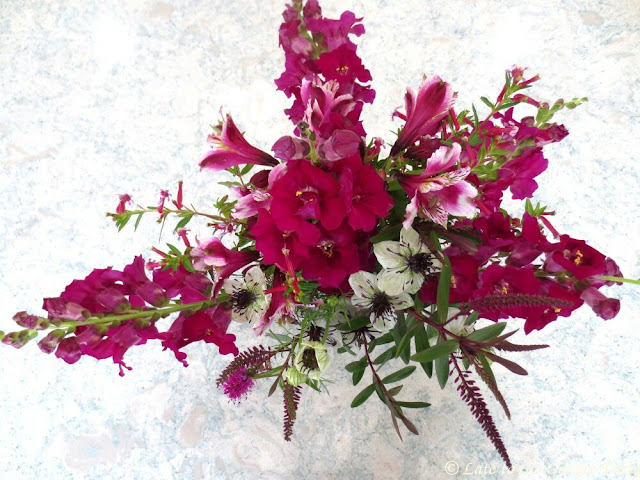Although I planned to drop in at South Coast Botanic Garden's SOAR exhibit once more before it closes, I hadn't expected to do that again in May. However, I bowed out of other plans with a friend as I've continued to feel crummy. She wanted to stop by prior to my birthday anyway so I booked tickets to the butterfly exhibit, which is about five miles from my home.
It was sunnier than it'd been at the time of my earlier visit and the butterflies were much more active. The butterfly pavilion was also a lot more crowded with people. I attempted a few videos but they were horrid, even after editing; however, my friend sent me one of hers. The large Blue Morpho (Morpho plieides) were the primary focus.
Here's a closeup of a Morpho for reference:
 |
| This one settled on the pavilion's information desk, where its beauty could be easily admired |
The majority of my photos captured butterflies I photographed earlier in the month but there were several new ones. SCBG gets new deliveries of butterfly chrysalises every week. These hatch on their own schedules and are released into the pavilion when they're flight-ready.
 |
| This is a Giant Owl butterfly (Caligo telamonius memnon) with wings closed and open. I think this was the first time I've seen one with its wings open. |
 |
| I spotted this female Grecian Shoemaker (Catonephele numilia) on a child's cap. The female and male members of the species look nothing alike. |
 |
| This Julia butterfly (Dryas iulia) blended in with the flowers it sipped from almost perfectly |
 |
| This is a Gray Cracker (Hamadryas februa) |
 |
| I featured a Ruby-spotted Swallowtail (Papilio anchisiades) with its wings closed in my prior post. This one feeding from a Cosmos had its wings wide open. |
 |
| The green and brown Malachite butterfly (Siproeta stelenes) is one of my personal favorites |
I noticed something that raised alarm bells during my visits to the exhibit this year. On both occasions, a large number of the small children inside the pavilion had negative reactions to the butterflies when they fluttered by. Some screeched (not in a happy way) while others moved away or sought protection from an adult. I know that much of Los Angeles County is an asphalt jungle and fewer children have close interactions with wildlife of any kind here but this disturbed me. Butterflies are, almost by definition, magical creatures and I'd expect children to gravitate toward them rather than be repelled. If there are children in your household or elsewhere in your family or neighborhood, please invite them into your gardens if butterflies are present. And, if there are exhibits like this one near by, take them if you can - or encourage local schools to do so. I don't want to imagine a future generation that fears the most beautiful things nature has to offer.
I've yet to see any native butterflies in my own garden yet this year. Hopefully, they're just waiting for warmer temperatures.
All material © 2012-2023 by Kris Peterson for Late to the Garden Party
















































